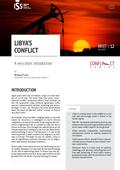You are here
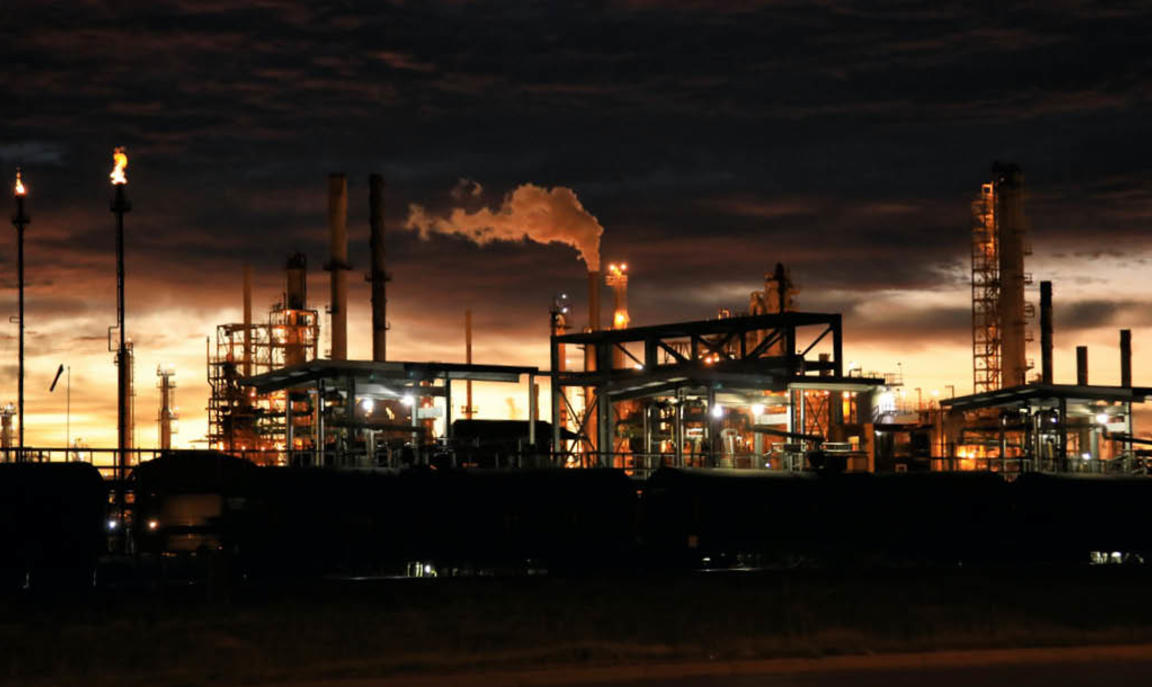
Curse or blessing?
Introduction
When the price of oil goes down, there is often a sigh of relief among oil-importing countries, as cheap oil means a boost for the economy and increased savings for consumers and businesses. As a result, most of Europe tends to notice price shocks only when prices go up: consumers are squeezed while producers accumulate enormous wealth. Yet, for oil-exporting countries cheap oil means increased poverty and tighter budgets – a recipe for instability and conflict.
This Conflict Series Brief analyses the effects of the recent pandemic-induced oil price shock on three vulnerable, conflict-affected countries. This is done by testing the two competing theories of the resource curse and of the rentier state, each offering a different interpretation of the oil-conflict nexus:
- The resource curse theory posits that an abundance of natural resources, and in particular oil, raises the probability, frequency, and intensity of conflict.
-
The rentier state theory sees the presence of oil as having a positive effect on peace, as regimes use revenues to either buy off political opposition or suppress it.
The recent price crash and its effects on conflicts in South Sudan, Libya and Iraq provide empirical support to the analysis. This Brief argues that both the stabilising and destabilising mechanisms identified in the two grand narratives are simultaneously at play in oil-rich countries. It shows that oil prices occupy a central role in determining which theory provides the most accurate outcome prediction. As a result, we hope to get a better understanding of the often-counterintuitive role that the resource plays in the onset of civil war.
Building on the experience of the 2020 pandemic price plunge, the Brief ends with an overview of the future challenges that cheap oil will entail for producers and for Europe as oil demand peaks and the world moves away from fossil fuels.
The oil-conflict nexus
The two theories of the resource curse and of the rentier state capture the many contradictory forces at play within oil-rich countries. Empirical studies show that on average, the presence of oil does indeed favour conflict, as the incidence of civil war appears greater in oil economies than in non-oil economies. However, for each oil-dependent country lapsing into conflict another one is spared from violence. Different structural mechanisms are in place within resource-endowed economies steering the oil-conflict relationship towards opposing ends.1 Petrostates appear more stable and comparatively more resistant to dramatic political change. Yet, because of their intrinsic features, they also generate the conditions for opponents to challenge those very same elements.2 The following analysis indicates fluctuations in the price of crude oil as a potential enabling mechanism for this to occur.
The correlation between oil abundance and proneness to conflict is usually explained by the two basic mechanisms of grievance and greed: the grievance mechanism explains civil conflict as resulting from the inherently unequal distribution of rent income. The greed mechanism sees civil conflict as driven by expected payoffs.
The effect of oil on regime stability ultimately depends on the income it can generate – that is to say, on its price.
Academic discourse often tends to polarise the debate over the merits of each mechanism, opposing ‘loot-seeking’ to ‘justice-seeking’ motives in a broader debate over the role of socio-political versus economic factors leading to conflict. However, empirical evidence shows how civil wars are often rooted in causes that reflect a blend of the two. For instance, greed-driven rebels may exploit a grievance narrative for their own personal gain, as in South Sudan, just as grievance-justified violence may persist over time driven by economic interests and opportunities, as in Libya.3 Yet, motives alone are rarely a sufficient element to trigger violence without the right opportunity to do so. A rebellion is feasible when the opportunity costs of engaging in conflict are lower: if control over the country’s oil wealth is relatively easy to obtain for insurgents, a rebellion is likely to occur, regardless of the rebels’ agenda.
On the other hand, according to the theory of the rentier state, oil wealth – or the expected promise thereof – acts as the principal source of state legitimacy in oil-exporting countries. It plays a central role in both the formation of the state and in the maintenance of its relations with society. Oil rents, often at the cost of political freedoms, fund robust stabilising mechanisms reducing the likelihood of resource-rich countries lapsing into violence.4 Rentierism is usually associated with weak institutionalisation and poor governance, all issues that the resource curse theory identifies as indirect causes of violence. However, what proponents of the theory substantially overlook is how, at the same time, rents provide ruling elites with plenty of resources to counterbalance these very same issues. This can be done either with the stick, as repression capacities directly undercut the feasibility of a rebellion, or with the carrot, through the co-optation of potential opposition; most often in a combination of the two. Yet, both distributive and repressive policies are costly, and rentier states have to cross a high threshold of wealth generated by their base commodity to enforce them. In other words, the effect of oil on regime stability ultimately depends on the income it can generate – that is to say, on its price.
The debate can be broken down into two main conclusions: (i) oil rents provide both the economic incentives and social cleavages for rebel groups to engage in conflict; (ii) oil rents enable the state to suppress or buy out insurgencies. These two propositions may seem mutually exclusive. Instead, both are simultaneously true in an oil-dependent economy. They coexist, balancing each other out from the opposing ends of the same spectrum. Both theories potentially provide accurate descriptions of oil-exporting countries’ inner mechanisms. Whether and how one ultimately prevails over the other in explaining conflict dynamics depends on contextual factors. These can be either country-specific or caused by important exogenous factors, such as the price of oil. This Brief explores this latter aspect.
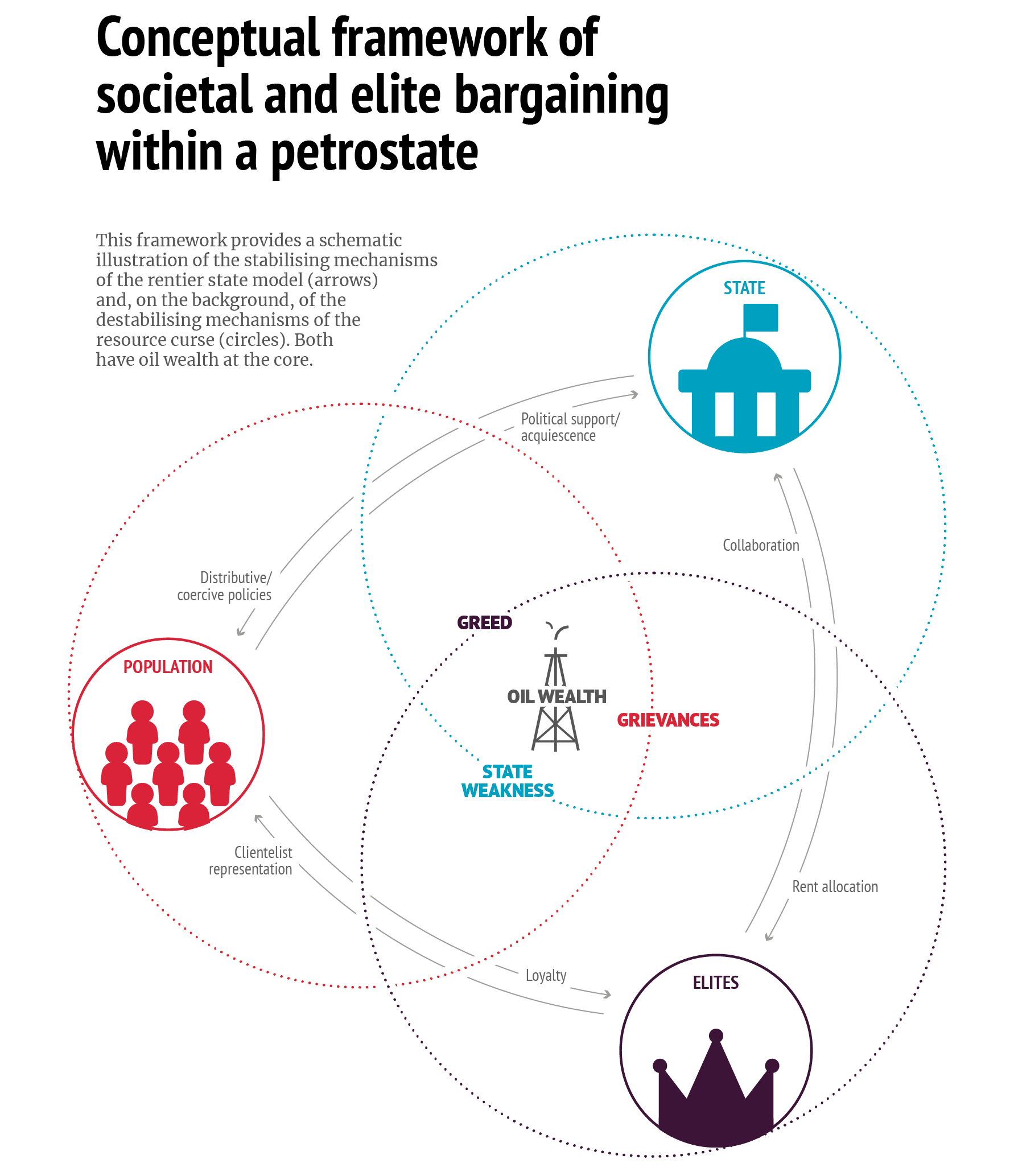
Whether the intrinsic characteristics of an oil-dependent country become strengths, as in the rentier state model, or weaknesses, as in the resource curse argument, may depend on fluctuations in prices. As the value of a natural resource is determined by the income it generates, the effects of oil on peace may drastically differ depending on its market price. Just as governments’ coercive capacities mirror price movements, so do rebel groups’ incentives to carry out insurgencies, as the value of the prize at stake is directly proportionate to its market price. Thus, price generates contradictory pressures on conflict. Both upward and downward oil price movements have, on paper, equal chances of mitigating or exacerbating conflicts depending on the relative contextual strength of the two effects. However, a few preliminary conclusions may be drawn by looking at the specific nature of the resource curse and of the rentier state, and of their contradictory effects on the onset of civil war.
Rentierism refers to strategies, and official policies, actively pursued by supposedly rational actors who take decisions according to the available resources. On the other hand, the resource curse consists of a set of systemic phenomena that only passively react to external circumstances. As such, rentierism should see an almost immediate impact coming from oil price changes while the resource curse may display its effects over a longer timeframe. Accordingly, low oil prices would have a destabilising effect on peace in the short term and a progressively stabilising effect in the longer term as the ‘curse’ gradually fades away alongside a country’s dependence on the resource. Of course, the higher the dependence of a country, the more intense the initial destabilising impact.
Understood this way, the resource curse/rentier state debate can be broken down and replicated along three categories: greed vs. patronage; feasibility vs. repression; grievances vs. large distribution.
These categories encompass the two theories’ main arguments relating to the oil-conflict nexus, juxtaposing the destabilising mechanisms of the resource curse with the stabilising mechanisms of the rentier state model to assess their relative strength in light of price fluctuations.
The following analysis shows how the balance between these elements is influenced when prices plummet. The pandemic-induced price shock and its effects on three ongoing conflicts in South Sudan, Libya and Iraq provide empirical support.
The pandemic price crash
In recent months better-than-expected demand recovery and still-tightened supply have been pushing prices for global benchmark crude to the highest settlement since January 2020. However, most producers remain chastened by the year-long price crash. As prices averaged at $30-40 per barrel throughout most of 2020, no major hydrocarbon-exporting state was able to balance its books during the pandemic. Moreover, unlike the one in 2014-16, this price shock was not preceded by a period of stable, high prices that would have allowed governments to reinforce their finances. On the contrary, prices have been stagnating ever since, averaging between $50-$70. This is persistently below many oil exporters’ fiscal break-even levels. As a result, fiscal balances in virtually all oil-exporting economies have turned negative, leading to a rapid depletion of buffers, as spending increased to combat the pandemic outbreak.
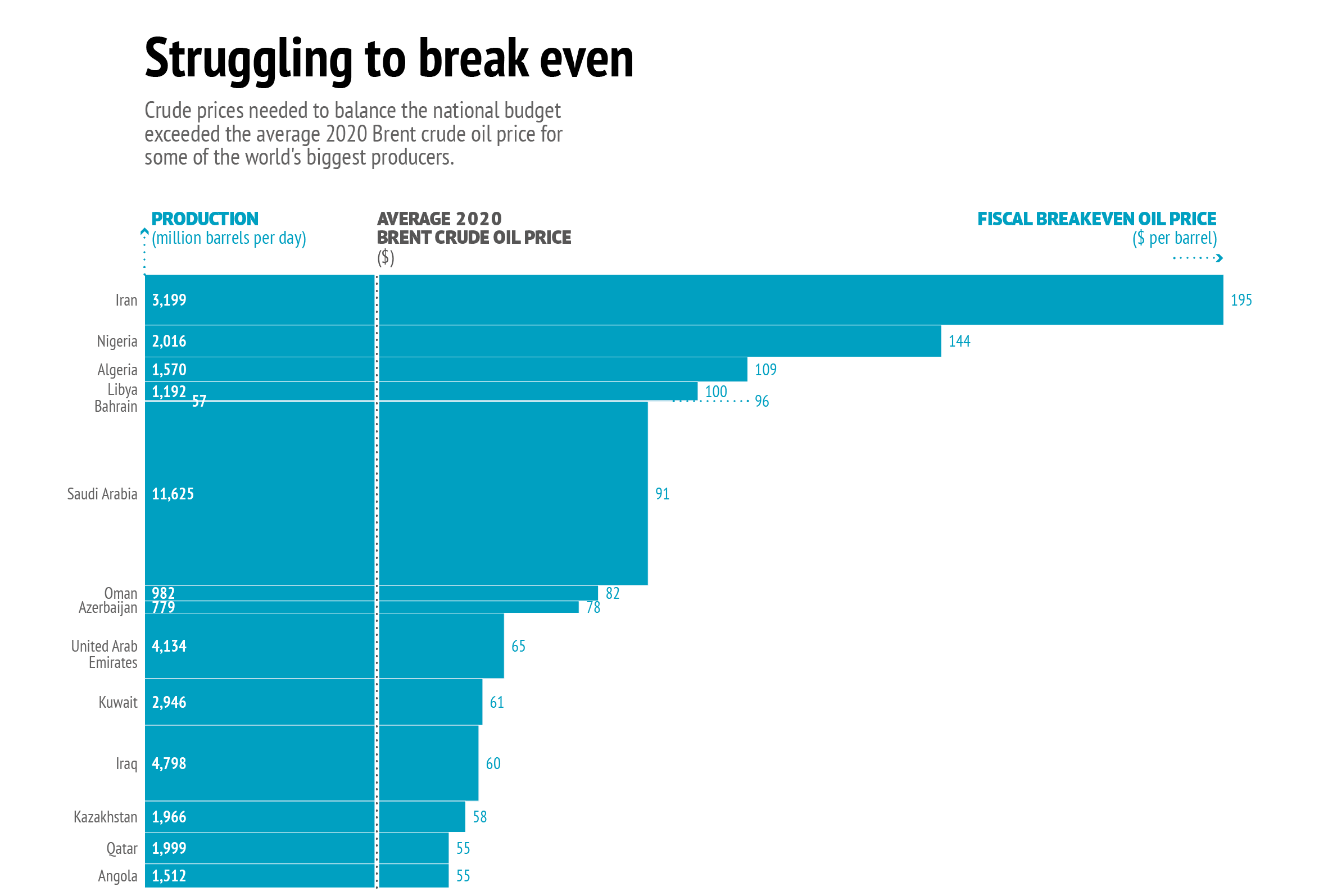
Clearly, fiscal break-even prices are only one of the many factors indicating which petrostates are the most vulnerable to deep economic turbulence and the resulting socio-political turmoil. Countries with comparatively more diversified economies, more flexible exchange rate regimes and larger foreign currency reserves are obviously better equipped to navigate the storm. Some countries also have the capacity to curtail public spending and/or borrow credit, as well as the legitimate political institutions to do so while managing the associated, inevitable social hardships. Yet many others do not. There are countries with no economic cushion at all, like Iran, Oman, Algeria, Nigeria, Angola, Venezuela, Ecuador – all particularly vulnerable, if not already on the brink. And then, there are countries for which the oil price crisis could lead to an existential one. Iraq, Libya, and South Sudan are the most representative of this category. Each in the throes of a different stage of civil conflict, these countries are arguably the most exposed to the risks associated with cheap oil. In these cases, the last few months have demonstrated how a sudden decline in the price of oil – at least in the short term – disrupts the rentier state’s mechanisms of co-opting and coercing consent more swiftly than it shifts motivation and opportunities to rebel.
South Sudan: greed vs. patronage
Greed-based versions of the resource curse theory argue that the prospect of controlling oil resources and rents would be enough of a reason for rebels to fight and/or continue fighting. Logically, if prices fall so should incentives for a rebellion. At the same time, oil-dependent regimes often rely on oil revenues to buy and maintain loyalty of political rivals through patron–client networks that increase political stability. So when oil revenues decline the government may no longer be able to afford to buy off the opposition and hostility towards the regime may surface. Low oil prices would affect both the incentives for conflict and the government’s capacity to offset them. Yet, considering that seizing control over natural resources can be seen as an investment leading to possible future returns, a downward price shock, especially if perceived as temporary, may have little to no influence on rebels’ considerations. On the other hand, a political crisis may not take long to emerge should a government no longer be able to afford the expensive acquiescence of influential leaders or important social recipients. The conflict in South Sudan, one of the most oil-centred in recent history, offers an ongoing example of these tensions.
Among a myriad of causes ranging from ethnic divisions to socio-economic grievances, control over the country’s oil wealth has been the main prize at stake in the confrontation between President Salva Kiir and former Vice-President Riek Machar. The nearly total dependence of the country’s economy on oil exports is at the base of a zero-sum logic that has persistently hindered compromise and frustrated peace efforts. At the same time, accounting for 90% of revenue, oil exports are crucial for the government to finance the patronage networks on which its power rests.5 After years of civil war, the establishment of a transitional unity government in February 2020 was welcomed as an important step in stabilising the country. However, the sharp fall in oil prices has threatened the country’s fragile stability, endangering some of the political commitments the government had agreed to in the deal. President Kiir made several concessions to the opposition leader, including the allocation of the Ministry of Petroleum to his political faction, the Sudan People’s Liberation Movement-in-Opposition. The agreement also provides for a disarmament, demobilisation and reintegration (DDR) process, paying salaries to the newly integrated militias and accommodating various political factions through a number of economic measures. All this is to be financed by selling crude oil.6 Indeed, the peace agreement was reached on the assumption that the newly formed government would have been able to accommodate each party’s appetites by generating enough finances through oil exports after the return of peace. When the deal was signed, crude oil prices averaged $70 a barrel. With this figure nearly halved throughout most of 2020, the peace process and security arrangement remain under threat. The unity government rests on uneasy power-sharing arrangements put in place to ensure that both sides benefit from the state’s financial patronage. If oil wealth is not split equally between both parties, the agreement may not hold for much longer.
The international community has continued to support the peace deal through humanitarian aid, for instance by providing food for military cantonment sites. However, South Sudan’s main foreign donors hesitate to finance the state-building project directly due to concerns about the high level of corruption among the country’s elites.7 Therefore, following months of depressed oil revenues, government funding for the peace process remains in short supply. As the pie gets smaller and smaller, fear of not getting a fair slice grows among an elite class who have often resorted to violence to negotiate their way into a greater share of power, and the risk of conflict intensifies.
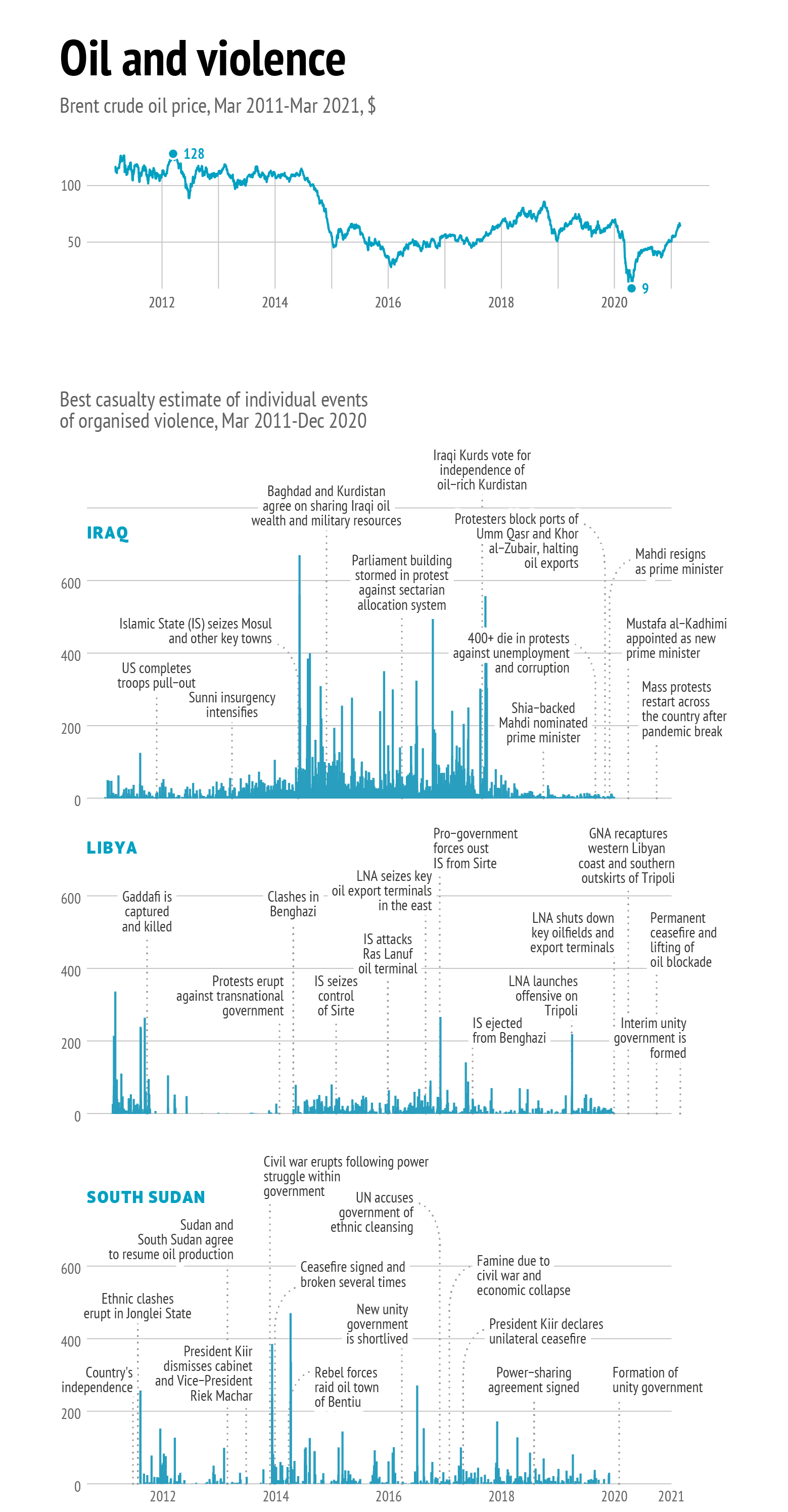
Libya: feasibility vs. repression
The value of the prize alone is not enough to justify an insurgency; eventual costs also need to be taken into account. The feasibility argument, the logical extension to greed arguments, posits that if and when rebellions are feasible and cost-effective, they are likely to occur. The feasibility of an insurgency is inversely proportional to the ‘repression mechanism’ the government is able to put in place. Governments may employ a good portion of their resource revenue on a huge state-security apparatus enabling them to suppress the opposition. Their ability to do so depends on the available liquidity, which in petrostates consists of the amount and value of the crude oil they are able to export. Of course, the higher the price of oil, the more efficient will be the government’s repression mechanism. At times of low oil prices, political opponents may find a window of opportunity for an armed rebellion if a government cuts back on military and internal security spending. These spending cuts would also have serious consequences for counterinsurgency operations when military hostilities escalate. In Libya, the pandemic-induced demand crunch that caught the country’s already frazzled oil industry in the midst of a historic price shock was a turning point in the conflict.
When rebel Libyan National Army (LNA) commander Khalifa Haftar shut down production from the oilfields controlled by his forces, the internationally recognised Libyan Government of National Accord (GNA) in Tripoli was left with a reduced quantity of lower quality crude. The GNA continued financing its war by selling oil, which accounts for almost 95% of its revenue, at roughly half of its original price.8 The price shock, coupled with a blockade that saw output dropping below 100,000 barrels per day (b/d), down by around 1 million b/d from the start of the year, cost the GNA almost $10 billion until the lifting of the force majeure in September.9 Having pushed the LNA on the backfoot after resisting a year-long siege, but with less liquidity available to grant the indispensable distribution of rents to allied militias, Tripoli forces simply ran out of time. At the end of August, faced with the prospect of a lengthy and costly military confrontation along the Sirte-Jufra axis, the GNA prime minister announced cessation of all military operations. With the depletion of its only source of revenue, Tripoli was forced to abandon any hope of a quick military solution before state coffers were completely drained. Libya’s example shows how, while repression mechanisms almost immediately started waning alongside falling oil prices, control over the country’s oil reserves continued to be a matter of major strategic importance. Low prices magnified the effects of the blockade and ultimately crippled Tripoli’s military momentum, forcing the GNA to work out an agreement with Haftar who, instead, reinforced his position ahead of political talks.
Iraq: grievances vs. large distribution
The very nature of a rentier economy is thought to create grievances that may encourage or intensify insurgencies along identity lines.10 At the same time, rentier governments commonly use oil revenues to buy citizens’ consent, for example through large-scale distributive policies, public sector employment, subsidies and free public services. This provides for increased socio-political stability either through rent-based social contracts or by defusing crises with ad-hoc payoffs. Governments may engage in such ‘populist’ policies, or boost existing ones, at the first signs of social unrest and potential rebel leaders may find it difficult to mobilise the population and recruit members. However, this strategy clearly works only as long as the government enjoys the resources that allow it to pursue such a policy. In the event of a collapse in the price of oil, only governments standing on particularly solid financial ground or with large sovereign wealth funds are able to maintain such policies. Otherwise, austerity measures and cuts in social spending may be necessary, an eventuality that is usually seen as the very last resort. In Iraq, austerity measures in response to the collapse in government revenue have come at the expense of much-needed reforms, further weakening an already delegitimised government.
Rentier governments commonly use oil revenues to buy citizens’ consent.
When Mustafa al-Kadhimi took office as Iraq’s new prime minister following the resignation of Adel Abul Mahdi, he was called to address an ever-deepening socio-political crisis that saw protests turning violent in the autumn of 2018. However, popular frustration with corruption, unemployment and poor public services – which led to Mahdi’s resignation – is still prevalent. This is now compounded by the fiscal crunch caused by the collapse in the price of oil. This has reduced the government’s space for manoeuvring and closed space for dialogue amid rising sectarian tensions. With oil sales accounting for 67% of the country’s economy and 92% of government revenues, Iraq must borrow just to pay salaries and pensions, which cost no less than $4.5 billion each month.11 In fact, the government further expanded public sector employment as part of its responses to new demonstrations in 2019. The monthly payroll grew by 13% in 2019 alone, and increases in social protection programme allocations are absorbing a growing share of the budget.12 The 2020 state budget (which was never approved due to political turbulence at the time) was prepared on the assumption of $56 per barrel to meet these expenses. But prices have been well below that threshold for most of the year. Given the restricted fiscal space, Baghdad was forced to curtail social spending, delay foreign debt payments, and introduce 60% salary cuts for the public sector.13 Clearly not the best recipe to confront popular discontent, especially with more than four million employees, retirees and other beneficiaries on the state payroll and a growing number of low-income families under food relief programmes. These groups together constitute most households in Iraq, and the country’s recent history shows how failure to meet any of these obligations may easily result in a wave of fierce anti-government protests. To complicate things further, in December the Central Bank devalued the national currency (-23%) for the first time in decades, immediately raising prices in a country that relies heavily on imports.14
The Iraqi example shows how, especially on the heels of political instability and sectarian tensions, government legitimacy bought through the allocation of rents is extremely vulnerable to low prices. The coronavirus drove protesters off the streets in 2020, providing the country’s elites with temporary relief from the mounting socio-political pressure. However, protests are likely to reemerge in 2021 as economic and social consequences take their toll.
What's to come?
The above analysis has identified the price of oil as a point of convergence between the two theories of the rentier state and of the resource curse in explaining the onset of civil conflict. At the same time, the case studies present some empirical examples of how a sudden collapse in the price of oil may impact conflict-affected countries characterised by high levels of dependency on oil exports and low levels of economic resilience. For instance, the price shock may frustrate efforts towards a sustainable peace process in Libya, undermine many of the commitments underpinning an increasingly fragile peace agreement in South Sudan, and lead to a new outbreak of violence in Iraq. Even with prices recovering to pre-pandemic levels, the impact of the crisis in these countries has been such that it may continue to reverberate throughout the years ahead.
Thomas Friedman famously argued that “the price of oil and the pace of freedom always move in opposite directions in oil-rich petrolist states”. If true, falling oil prices would bolster democratisation across oil-rich nations in the long term. This may eventually reduce the likelihood of conflict in these countries but – as the above analysis suggests – not before having profoundly destabilised them.15 The best way to hedge against the perils of falling oil revenues is thus to reduce the dependence on oil revenues altogether and, most importantly, on the political structures that are built upon them. If anything, the pandemic-driven fall in the price of oil is a powerful reminder of the urgency of such a move.
As oil demand plummets, conflicts may increase
As the global energy transformation gains momentum, leading to a fall in fossil fuel demand, a prolonged decline in oil prices is expected to dramatically destabilise oil-exporting countries in the foreseeable future. Or at least this is what will happen if a transition to a post-carbon world is not accompanied by the necessary stabilisation process. While the 2020 crisis has confronted oil-producing countries with the necessity to diversify their economies, it has also revealed the instability that a sudden shift away from fossil fuels could bring. Not so long ago, global dependency on oil was believed to be destined to gradually fade away alongside the depletion of the world’s oil reserves. Production would peak and slowly decline in the face of a still high global demand that would maintain high prices.16 Instead, the exact opposite is happening. The world is not running out of oil, it is turning away from it. The drop in prices triggered by growing shale oil production made this clear in 2014, and the Covid-19 crisis has just reinforced this trend. Even before the pandemic outbreak, most of the industry’s forecasts already indicated 2020 as the ‘tipping point’ for oil demand.17 Of course, what the new normal will look like post-crisis will largely depend on the degree of public recovery spending that is committed to the green economy. However, early signals seem to suggest that the energy transition will proceed at a quicker pace than before the pandemic.18 According to a recent study from the environmental think tank Carbon Tracker, should the world commit to meeting current climate targets, oil-producing countries globally could lose a collective $13 trillion by 2040 compared with industry expectations – $9 trillion of which just among the 40 petrostates that are most heavily dependent on hydrocarbon revenues. In total, this would represent a 51% drop from current levels.19
Overall, prices seem set to remain low over the long term, and the recent crisis has only given us a taste of the possible consequences. Beyond immediate financial concerns, cheap oil has unveiled many of the contradictions characterising oil-producing nations. Where political structures are frail and dependent on oil wealth, a sustained period of low prices poses critical long-term security threats to regimes that have not already embarked on the necessary social, political and economic reform processes. This is not necessarily a problem today, at least not as long as oil prices remain relatively buoyant. But what will keep these countries together when the oil money finally runs out? Political and economic elites of some oil-exporting countries continue to bury their heads in the sand, hoping for oil prices to recover rather than investing in non-oil sectors, as increased economic competition would jeopardise their own entrenched interests. Other countries may simply lack the necessary means to set such a paradigmatic change in motion. Whenever producers can afford the necessary investment to reduce their dependence on hydrocarbon exports and show the political will to do so, Europe should be prepared to assist them in the transition.
In fact, this is not only a problem of the local elites. In a persisting low-price environment, Europe will have to be prepared to deal with the fallout too. Surrounded by oil-exporting countries in its southern and eastern periphery, Europe’s neighbourhood will almost certainly become more unstable if low prices persist as falling revenues could lead to humanitarian crises and increased geopolitical tensions. And while the continent is a net beneficiary of low energy prices, economic benefits would be more than offset by the resulting arc of instability. The EU will have to embrace the energy transition taking place both outside its immediate borders and within them. Building upon recent programmes under the External Investment Plan, Brussels could support reforms to diversify oil-reliant economies in its neighbourhood with a dedicated investment scheme. This could be modelled after the Just Transition Fund where funds would be allocated according to precise energy transition goals while bearing in mind country-specific socio-economic necessities.
The only way out of this trajectory is economic diversification, but major economic reforms will only be possible in conjunction with political ones: otherwise corruption, institutional weakness and political turbulence will drive foreign investments away. Such foreign investments are especially needed by financially vulnerable pertrostates – those that the International Renewable Energy Agency (IRENA) classifies as “highly exposed, low-resilience countries.” These countries, while highly dependent on oil rents, lack economic resilience and financial buffers.20 Our case studies – Libya, Iraq, South Sudan – belong to this category and, with their social fabric already frayed by protracted conflicts, are among the most vulnerable to the destabilising effects of low prices. Yet, many others, especially in Africa, share similar characteristics. Here, where the effects of cheap oil will be felt sooner than anywhere else, investment programmes should be focusing on the development of non-oil sectors, financing local small and medium-sized enterprises while promoting increased transparency and stronger regulatory frameworks to unlock financing from private investors. Preventing petrostates from collapsing once they begin to run short of oil revenues will thus require radical change in their institutional settings as well as political processes. In a sustained lower-for-longer price scenario, the rentier state model is simply not sustainable anymore.
This is more than just a fiscal problem: falling oil value could threaten to unravel the social contract between rentier governments and their citizens, with all the risks that this entails. The recent wave of insecurity portrayed by the case studies above does not reflect a temporary anomaly. It is a glimpse of the future. A future that can however look very different, but only with the necessary forethought. European governments should thus keep the above risks in mind when debating their spending priorities, just as the EU should consider the impact abroad of its domestic projects bearing global consequences, like the Green Deal.
References
1. Matthias Basedau and Jann Lay, “Resource Curse or Rentier Peace? The Ambiguous Effects of Oil Wealth and Oil Dependence on Violent Conflict,” Journal of Peace Research, vol.46, no.6 (2009), pp. 757-776.
2. Jeff Colgan,“Oil, domestic conflict, and opportunities for democratization,” Journal of Peace Research, vol.52, no.1 (2015), pp. 3-16.
3. Wolfgang Pusztai,“Libya’s Conflict,” Brief no.12, Conflict Series, European Union Institute for Security Studies, November 2019, https://www.iss.europa.eu/ content/libyas-conflict.
4. Hazem Beblawi and Giacomo Luciani, The Rentier State: Nation, State and Integration in the Arab World (London: Croom Helm, 1987).
5. World Bank, “The World Bank in South Sudan”, https://www.worldbank.org/ en/country/southsudan.
6. Intergovernmental Authority on Development (IGAD), Agreement on the Resolution of the Conflict in the Republic of South Sudan, August 15, 2015.
7. USAID, “South Sudan – Our Work”, January 21, 2021, https://www.usaid.gov/ south-sudan/our-work.
8. OPEC, Annual Statistical Bulletin, Vienna, 2020, https://www.opec.org/opec_ web/en/publications/202.htm.
9. Libyan National Oil Corporation, “NOC reports revenues for July and August 2020, Tripoli”, September 23, 2020, https://noc.ly/index.php/en/new-4/6133- noc-reports-revenues-for-july-and-august-2020.
10. Paul Collier and Anke Hoeffler, “The Political Economy of Secession,” Development Research Group, World Bank, December 23, 2002.
11. Javier Blas, “Cash-Strapped Iraq Seeks $2 Billion Upfront Payment for Oil,” Bloomberg, November 23, 2020, https://www.bloomberg.com/news/articles/2020-11-23/cash-strapped-iraq-seeks-2-billion-upfront-payment-for-crude?sref=6wCw510u.
12. Ali Al-Mawlawi, “Public Sector Reform in Iraq,” Middle East and North Africa Programme, Chatham House, June 2020, https://www.chathamhouse.org/sites/ default/files/2020-06-17-public-sector-reform-iraq-al-mawlawi.pdf.
13. Council of Ministers of Iraq, Cabinet decisions taken in the fifth regular session held on June 7, 2020, http://www.cabinet.iq.
14. Chloe Cornish, “Iraq devalues currency by a fifth as oil-price collapse hits,” Financial Times, December 20, 2020, https://www.ft.com/content/b8ceacab- b8af-4581-b687-f9495f5145aa.
15. Thomas Friedman, “The First Law of Petropolitics,” Foreign Policy, October 16, 2009, https://foreignpolicy.com/2009/10/16/the-first-law-of-petropolitics/.
16. Matthew Simmons, Twilight in the Desert: The coming Saudi oil shock and the world economy (Somerset: John Wiley& Sons, 2005).
17. Spencer Dale and Bassam Fattouh, “Peak Oil Demand and Long-Run Oil Prices,” Oxford Institute for Energy Studies, OIES Energy Insights, no.25, January 2018.
18. Richard Black, “Covid-19: Accelerating the Clean-Energy Transition,” Oxford Institute for Energy Studies, OIES Energy Insights, no.123, July 2020.
19. “Beyond Petrostates: The burning need to cut oil dependence in the energy transition,” Carbon Tracker, February 2021, https://carbontracker.org/reports/ petrostates-energy-transition-report/.
20. International Renewable Energy Agency (IRENA), “A New World: The Geopolitics of the Energy Transformation,” January 2019.

